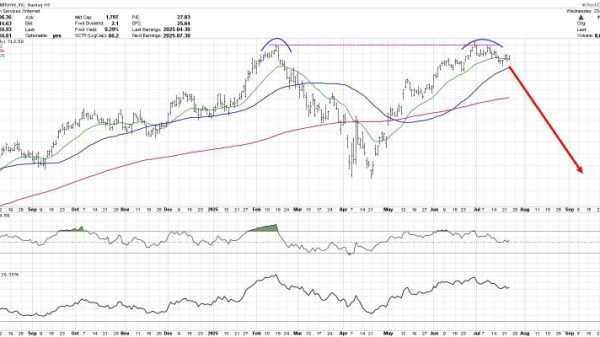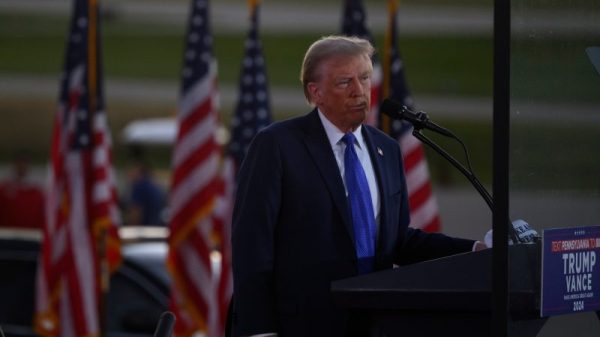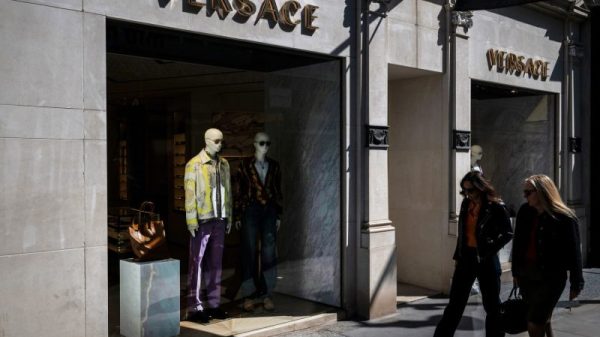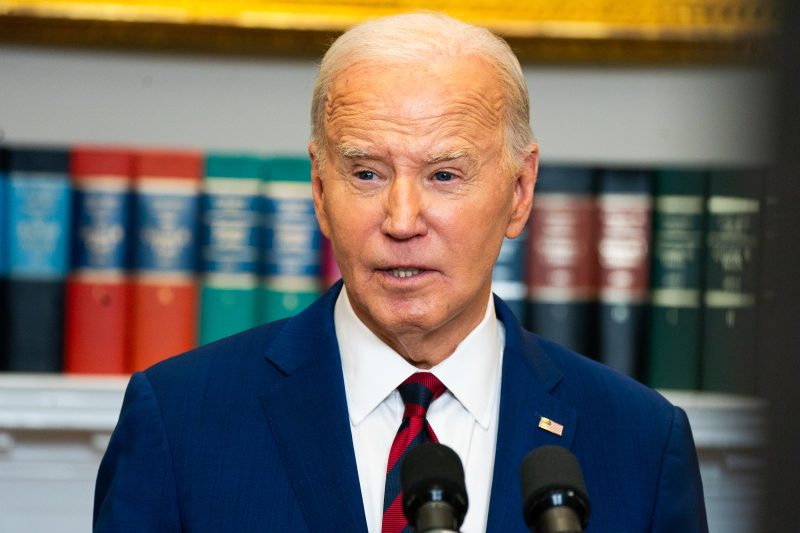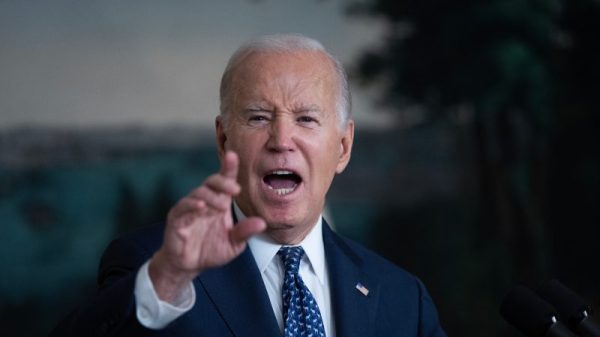The Biden administration’s plan to install a floating pier off the Gaza coast as part of a broad international initiative to feed starving Palestinians will endanger the U.S. service members who must build, operate and defend the structure from attack, military experts say, a risk with enormous political consequences for the president should calamity strike.
The effort, U.S. officials say, could deliver up to 2 million meals per day into the war-ravaged territory, where a famine is feared amid Israel’s sustained bombardment and what critics say are its extreme restrictions on the flow of food, medicine and other humanitarian aid.
While the Pentagon maintains that no U.S. troops will deploy into Gaza, it has disclosed little about how long the operation could last and how it intends to ensure the safety of those involved, alarming some in Congress and other critics of the president’s plan. Military officials declined to answer questions from The Washington Post about where the pier will be located and what security measures will be taken, citing a desire not to telegraph its plans.
The Americans’ fixed proximity to the fighting and the intense anger at the United States for its support of Israel will render the pier an enticing target for Hamas or another of the region’s militant groups — many of whom receive arms and military guidance from adversary Iran, skeptics of the operation warn. Rocket fire, attack drones and divers or speedboats hauling explosives all will pose a threat, they said.
Paul Kennedy, a retired Marine Corps general who led major humanitarian operations after natural disasters in Nepal and the Philippines, called it a “worthy goal” for the United States to reduce civilian suffering in Gaza. But he questioned whether the U.S. military is the proper entity to be involved.
“If a bomb went off in that location,” he said, “the American public will ask, ‘What the hell were they doing there in the first place?’”
John Kirby, a spokesman for the White House National Security Council, said that the assembly and operation of the pier will bring relief to thousands of Gazans, and is an important mission that will make a difference.
“But we know that such missions are never risk-free,” Kirby said. “That’s particularly so in a war zone like Gaza. There will not be U.S. troops on the ground, and we know our military leaders will make every effort to ensure their safety as they build and operate this pier.”
This account is based on interviews with eight current and former U.S. national security officials familiar with the Gaza operation’s ongoing planning or otherwise knowledgeable about the complex coordination required to safely conduct humanitarian missions of such a scale.
Those who defended the plan said the risk is real, but manageable, and that the United States is showing leadership by looking for new ways to feed Palestinians trapped by the fighting.
Several, however, cited the deadly terrorist bombings in Beirut in 1983 and during the U.S. evacuation of Afghanistan in 2021 as examples of the immense difficulty protecting U.S. service members during extended stays in vulnerable conditions.
The former left 241 U.S. service members dead. The latter killed 13 U.S. troops alongside an estimated 170 Afghans, and remains a low point for the Biden administration and the focus of an ongoing oversight investigation in the Republican-controlled House.
President Biden announced the Gaza pier deployment during his State of the Union address March 7, saying it will enable a “massive increase” in humanitarian assistance. The United States and other nations have, for the last several weeks, airdropped aid into Gaza, but those efforts have not met the demand.
The pier idea has been met with a mixed response, with the International Rescue Committee and other aid organizations saying the United States must use its influence to press Israel to let in more humanitarian deliveries by land. Israeli officials have refused to open Gaza’s northern crossing, citing security concerns, while in the south a tedious inspection process has limited the volume of aid that can enter.
Israel has accused the United Nations agency responsible for distributing most aid within the enclave of diverting supplies to Hamas, and said that delays have been caused by logistical problems among aid organizations, including a shortage of drivers.
The Army-led pier operation will involve about 1,000 U.S. troops and four Army ships that deployed from southeastern Virginia on March 12. After an estimated 30-day transit, the vessels are expected to pull in offshore, where the soldiers will build the floating steel structure and an 1,800-foot, two-lane causeway stretching from the edge of the Mediterranean Sea to a beachhead.
All deliveries will be staged and inspected in Cyprus before being loaded onto vessels that carry them to the pier. U.S. personnel will move supplies to the causeway, but they will not leave it, defense officials have said. Israeli Defense Minister Yoav Gallant has expressed support for the maritime plan, saying that Israeli forces will ensure aid reaches those it should.
Gen. Charles Q. Brown Jr., chairman of the Joint Chiefs of Staff and Biden’s top military adviser, told reporters last week that troops’ safety is “at the top of the list anytime we put our forces any place in harm’s way.” The United States will take measures to protect the soldiers, he said, and Israel and other countries are expected to assist with security. He did not elaborate.
Vice Adm. Brad Cooper, the No. 2 officer at U.S. Central Command, which coordinates all U.S. military operations in the Middle East, has held meetings in the region to set conditions for security and other requirements for the pier to work as envisioned, Brown said.
Brown said he received assurances from Lt. Gen. Herzi Halevi, his Israeli counterpart, that aid coming over the pier will not be subject to bottlenecks.
Gen. Michael “Erik” Kurilla, Centcom’s top commander, also sought to reassure lawmakers in congressional hearings earlier in March. But “strong reservations” remain, said Sen. Roger Wicker (Miss.), the Senate Armed Services Committee’s ranking Republican, and other GOP senators in a letter to Biden last week.
“We are gravely concerned,” they wrote to the White House, “that the Defense Department has given too little consideration to the likelihood that Hamas, Palestinian Islamic Jihad (PIJ), and other U.S.-designated terrorist organizations operation in Gaza would attempt to attack the U.S. personnel that will be deployed to this mission.”
Officials with Kurilla’s headquarters in Tampa declined to answer questions from The Post about what security measures will be taken, and U.S. officials have not publicly disclosed where along the Gaza coastline the pier will be installed.
James Stavridis, a retired admiral and former supreme allied commander of NATO, characterized the risk as “modest” saying he believes the mission is “sensible and achievable.”
If U.S. forces come under attack, it is most likely to originate by air, Stavridis said, arguing that the nearby positioning of a Navy warship equipped with an Aegis ballistic missile defense system should be sufficient to protect personnel on or near the floating pier.
U.S. sailors have repeatedly used the system off Yemen to take down missiles and attack drones launched by Iran-backed Houthi militants who, since November, have prosecuted an aggressive assault on commercial and military vessels transiting the Red Sea and Gulf of Aden. It has proved mostly successful, though a handful of Houthi attacks have slipped through, and a few civilian mariners have been killed.
To guard against manned and unmanned surface vessels that could pose threats, Stavridis said, commanders could position Navy SEALs or other armed personnel in small, high-speed boats, with Israeli security forces providing protection on land.
Anthony Zinni, a retired Marine general who led Central Command from 1997 to 2000, said a number of adversaries could target the pier, including Hamas and the Islamic State. He cited the 2000 attack on the USS Cole at a port in Yemen, in which al-Qaeda operatives drove a speedboat packed with explosives into the destroyer, killing 17 sailors and injuring dozens more.
Zinni predicted that the pier will have rings of security, with Israeli forces and others involved but U.S. troops providing the innermost layer of protection. Aircraft overhead also would be valuable, he said.
“The IDF is very capable, obviously — but I would still want my own internal security force,” he said.
Zinni said the mission seems reasonable, both to alleviate suffering and send the message that the United States cares about Palestinian civilians.
“It’s important for us to show that we’ve gone the distance with humanitarian concerns, or we’ll be seen as totally one-sided on this,” he said.
Joseph Votel, a retired Army general who oversaw Central Command from 2016 to 2019, said the Pentagon is “probably” going to be in a position off Gaza to provide adequate security. U.S. forces, he said, will be “well alerted and cognizant of the threat,” and probably have ample intelligence support.
Votel, now a senior fellow at the Middle East Institute, said the more significant challenge may be determining how the aid is distributed once it’s onshore. That, he said, is where the “real magic” will be.
“I think this is a pretty big undertaking,” he said. “But I think the benefit here is pretty significant.”
Others are less optimistic.
Jerry Hendrix, a retired naval officer and senior fellow at the Sagamore Institute, asserted that no matter what security is put in place, the causeway will be “highly vulnerable.” He called the plan “stupid.”
“There’s so much downside risk on this for what I think is relatively small upside in terms of potential to relieve the supply shortage and food shortage in the area,” Hendrix said, arguing that the delivery of more food over land routes is “the only method that brings a noticeable change to the Palestinian condition.”
Hendrix warned, too, of the unpredictability in what will happen ashore, where people’s desperation could create chaos, surging crowds and a new location for friction between Israeli forces and Palestinians.
“At some point in time, those supplies are effectively going to move from IDF-controlled territory or security into Palestinian hands,” he said. “And at that point in time, the reality is that the United States will not have control of those supplies at that interface point.”
Kennedy, the retired Marine general, recalled the aftermath of a typhoon that hit the Philippines in 2013. As U.S. forces deployed there to assist, he was concerned that Abu Sayyaf, a militant group there, would launch attacks on the Americans.
U.S. forces were not allowed to bring weapons on the deployment, he said, so he asked the Philippine government to position snipers nearby and had U.S. Marines work alongside them as observers.
“You’ve been entrusted with the lives of fellow citizens, and the children of fellow citizens, so your first obligation is force protection,” Kennedy said. “You have to ensure that your troops are safeguarded.”
Each day that U.S. forces remain involved is a day that they could come under attack, he assessed.
“There’s a point of diminishing returns, right?” Kennedy said. “They need to build that thing as quickly as possible, turn it over to any competent civilian authority — and get the hell out of there.”




